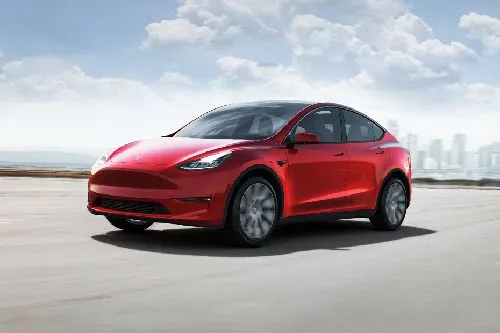
The global transportation landscape is undergoing a monumental shift. At the heart of this transformation lies electric mobility, a key player in the quest for sustainable transportation. As concerns about climate change intensify and urban areas grapple with pollution and congestion, electric vehicles (EVs) offer a compelling solution. This shift is not merely about replacing internal combustion engines with electric motors; it represents a paradigm shift in how society approaches mobility, energy consumption, and environmental responsibility. This article explores how electric mobility is not only redefining transportation but also acting as a catalyst for broader sustainable practices.
The Urgency of Sustainable Transportation
The need for sustainable transportation has never been more pressing. The transportation sector is one of the largest contributors to greenhouse gas emissions globally, responsible for nearly 24% of direct CO2 emissions from fuel combustion. Conventional fossil fuel-powered vehicles emit harmful pollutants, including carbon dioxide (CO2), nitrogen oxides (NOx), and particulate matter, which significantly contribute to air quality deterioration and global warming. As urbanization accelerates and the number of vehicles on the road grows, the environmental burden increases. Thus, transitioning to more sustainable modes of transportation is not an option but a necessity.
Electric mobility, in its various forms—electric cars, bikes, scooters, and buses—offers a pathway to reducing these emissions. By leveraging electricity, especially from renewable energy sources, electric vehicles have the potential to drastically cut the carbon footprint of transportation. Furthermore, they are quieter, reduce noise pollution, and operate more efficiently than traditional vehicles. These attributes make them indispensable in the broader effort to create a more sustainable and livable future.
The Evolution of Electric Mobility
Electric mobility is not a novel concept. The first electric cars appeared as early as the 19th century. However, the dominance of gasoline-powered vehicles, due to factors like range limitations, cost, and the convenience of gasoline, stifled the early development of electric vehicles. It wasn’t until recent advances in battery technology, coupled with growing environmental awareness, that electric mobility reemerged as a serious contender in the global transportation ecosystem.
The modern electric vehicle (EV) revolution can be attributed to improvements in lithium-ion battery technology, which has dramatically increased the range and reduced the cost of electric vehicles. Tesla, a leader in the EV industry, has played a significant role in popularizing electric cars with models that are not only practical but also desirable. Other major automakers have followed suit, and today, nearly every major manufacturer has an electric or hybrid vehicle offering.
Moreover, electric mobility is not limited to private vehicles. Public transportation systems around the world are transitioning to electric buses, while electric bikes and scooters are becoming common in urban centers. These developments are integral to the larger framework of sustainable transportation, providing clean and efficient alternatives to fossil fuel-powered vehicles.
The Role of Electric Cars in Sustainable Transportation
Electric cars are perhaps the most recognizable component of electric mobility, and their impact on sustainable transportation is profound. One of the main advantages of electric cars is their zero tailpipe emissions. While the electricity used to charge these vehicles may still come from fossil fuels in some regions, the shift toward renewable energy sources like wind, solar, and hydroelectric power means that the overall carbon footprint of electric cars is significantly lower than that of traditional vehicles.
Reduced Emissions and Climate Impact
Electric cars produce no tailpipe emissions, which means they don’t release pollutants such as CO2 and NOx into the atmosphere. This makes them crucial in reducing air pollution, particularly in densely populated urban areas where vehicle emissions are a major concern. According to the International Energy Agency (IEA), electric vehicles emit around 30% less CO2 than their gasoline counterparts when powered by the average electricity mix of a country. In regions where renewables dominate the energy grid, this figure is even higher, demonstrating the synergy between electric mobility and the transition to sustainable transportation.
Energy Efficiency
Electric vehicles are also more energy-efficient than internal combustion engine (ICE) vehicles. While gasoline engines convert only about 20-30% of the energy from fuel into motion, electric motors can convert over 90% of the energy from the battery into driving power. This efficiency translates into lower overall energy consumption, further reinforcing the sustainability of electric mobility.
Advancements in Battery Technology
The sustainability of electric cars is further enhanced by advancements in battery technology. Lithium-ion batteries, which power most electric vehicles, are becoming more energy-dense, allowing for greater ranges on a single charge. Additionally, innovations in battery recycling and the development of solid-state batteries hold the promise of making electric vehicles even more environmentally friendly in the near future.
Public Transportation and Electric Mobility
While electric cars are important, they are only one part of the puzzle. Public transportation is a critical component of any sustainable transportation strategy, and electric buses and trains are helping to reduce the carbon footprint of mass transit systems. Cities around the world are investing in electric buses, which not only reduce emissions but also improve air quality and reduce noise pollution.
Electric Buses
Electric buses are gaining traction in cities across the globe as governments look to meet emissions reduction targets. These buses operate quietly and produce zero emissions, making them ideal for densely populated urban areas. Cities like London, Paris, and Shenzhen have already begun transitioning their bus fleets to electric, setting an example for other regions. The environmental impact is significant: a single electric bus can save approximately 1,690 tons of CO2 over its lifetime compared to a diesel bus.
Light Rail and Electric Trains
In addition to buses, many cities are expanding their light rail and electric train networks. Electrified rail systems are a cornerstone of sustainable transportation as they provide a clean, efficient means of moving large numbers of people. Trains, powered by electricity, can significantly reduce congestion and pollution, especially when integrated with other forms of electric mobility, such as e-bikes and scooters, to provide seamless last-mile connectivity.
Micromobility: Electric Bikes and Scooters
Micromobility—defined as the use of lightweight, low-speed vehicles such as electric bikes and scooters—has emerged as a transformative trend in urban transportation. These modes of transport offer a flexible, eco-friendly alternative to cars for short trips, which are often the most inefficient when taken by car.
The Rise of Electric Bikes
Electric bikes (e-bikes) are becoming increasingly popular in cities, providing an accessible and sustainable form of transport. E-bikes are especially appealing for short-distance commuters who want the convenience of cycling without the physical exertion required for longer distances or challenging terrains. They are also effective in reducing traffic congestion and freeing up parking spaces.
E-bikes represent a powerful tool for sustainable transportation. Unlike cars, they require minimal space, produce zero emissions, and are far more energy-efficient. Moreover, they can be easily integrated with public transportation systems, allowing commuters to use e-bikes for the first or last mile of their journey.
Electric Scooters and Urban Mobility
Electric scooters have also gained popularity in urban centers. These scooters, often available through shared mobility platforms, provide a convenient and environmentally friendly way to navigate cities. Similar to e-bikes, scooters contribute to sustainable transportation by reducing car trips, decreasing traffic congestion, and lowering emissions.
The appeal of micromobility solutions like e-bikes and scooters is that they cater to short-distance travel, which constitutes a significant portion of urban trips. By providing alternatives to cars for these shorter journeys, micromobility can play a key role in reducing the overall environmental impact of transportation.
The Infrastructure for Electric Mobility
While electric vehicles and micromobility solutions are vital to the future of sustainable transportation, their success depends heavily on the supporting infrastructure. Charging stations, battery recycling facilities, and renewable energy integration are all critical components of a robust electric mobility ecosystem.
Charging Infrastructure
One of the primary challenges to the widespread adoption of electric vehicles is the availability of charging stations. To facilitate the transition to electric mobility, it is essential that cities and governments invest in comprehensive charging infrastructure. This includes fast-charging stations along highways, public charging points in urban centers, and residential charging solutions.
Moreover, the integration of renewable energy into charging infrastructure is crucial for maximizing the environmental benefits of electric mobility. Solar-powered charging stations, for instance, can ensure that EVs are powered by clean energy, further reducing their carbon footprint.
Battery Recycling and Sustainability
The sustainability of electric mobility also hinges on how we manage the life cycle of electric vehicle batteries. As the adoption of EVs increases, so does the need for effective battery recycling solutions. Batteries contain valuable materials such as lithium, cobalt, and nickel, which can be recovered and reused. Efficient recycling processes can reduce the demand for mining these resources, which is often associated with environmental degradation.
Efforts are also being made to develop second-life applications for used batteries. For example, batteries that are no longer suitable for use in vehicles can be repurposed for energy storage in homes or businesses, further contributing to the sustainability of the electric mobility ecosystem.
Challenges and Opportunities in the Transition to Electric Mobility
While the benefits of electric mobility are clear, the transition to a fully electrified transportation system presents several challenges. These include the high initial cost of electric vehicles, range anxiety, and the environmental impact of battery production. However, these challenges are not insurmountable, and they present opportunities for innovation and growth.
Overcoming Range Anxiety
Range anxiety—the fear that an electric vehicle will run out of charge before reaching its destination—remains a significant barrier to widespread EV adoption. However, as battery technology improves and charging infrastructure expands, this concern is becoming less relevant. Newer EV models boast longer ranges, and the proliferation of fast-charging stations means that recharging on the go is becoming easier than ever.
Reducing the Cost of Electric Vehicles
Another challenge is the cost of electric vehicles, which remains higher than that of traditional gasoline-powered cars. However, as battery prices continue to fall and governments offer incentives for EV purchases, the price gap is narrowing. Additionally, the lower operating costs of electric vehicles—due to cheaper fuel and maintenance—make them more cost-effective in the long term.
Environmental Impact of Battery Production
While electric vehicles produce zero tailpipe emissions, the production of batteries is energy-intensive and can have significant environmental impacts. Mining for materials like lithium and cobalt is often associated with habitat destruction and water pollution. However, efforts are underway to make battery production more sustainable through the development of alternative materials and more efficient mining practices.
Conclusion
Electric mobility is a crucial component of the transition to sustainable transportation. By reducing emissions, improving energy efficiency, and offering cleaner alternatives to conventional vehicles, electric mobility is helping to mitigate the environmental impact of the transportation sector. However, for electric mobility to reach its full potential, it must be supported by robust infrastructure, sustainable battery production, and the continued advancement of technology.
The journey toward sustainable transportation is a long one, but electric mobility has laid the groundwork for a cleaner, greener future. As cities, governments, and individuals embrace this shift, we move closer to a world where transportation is not only efficient and accessible but also environmentally responsible.






